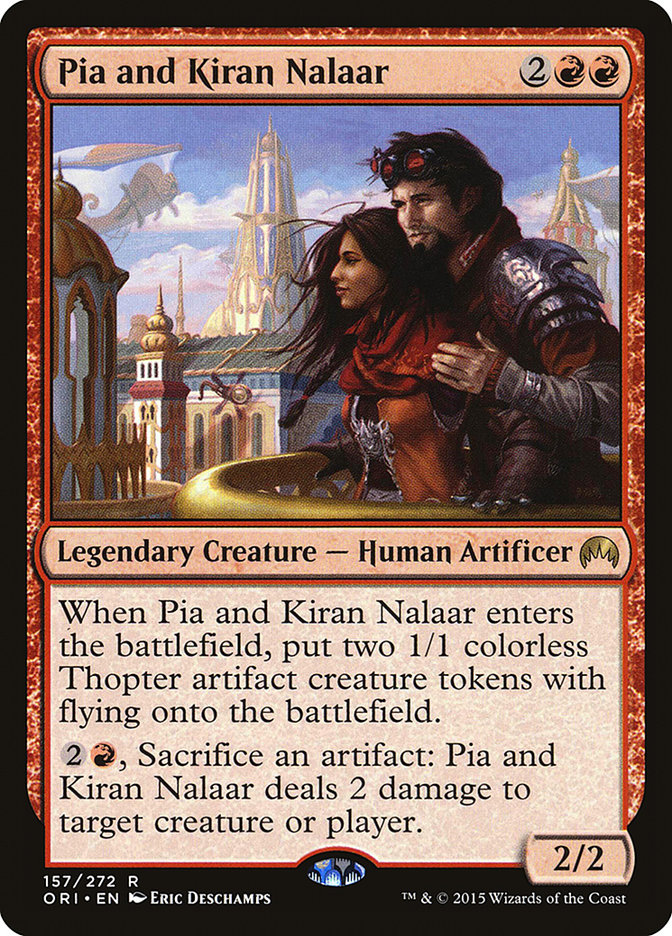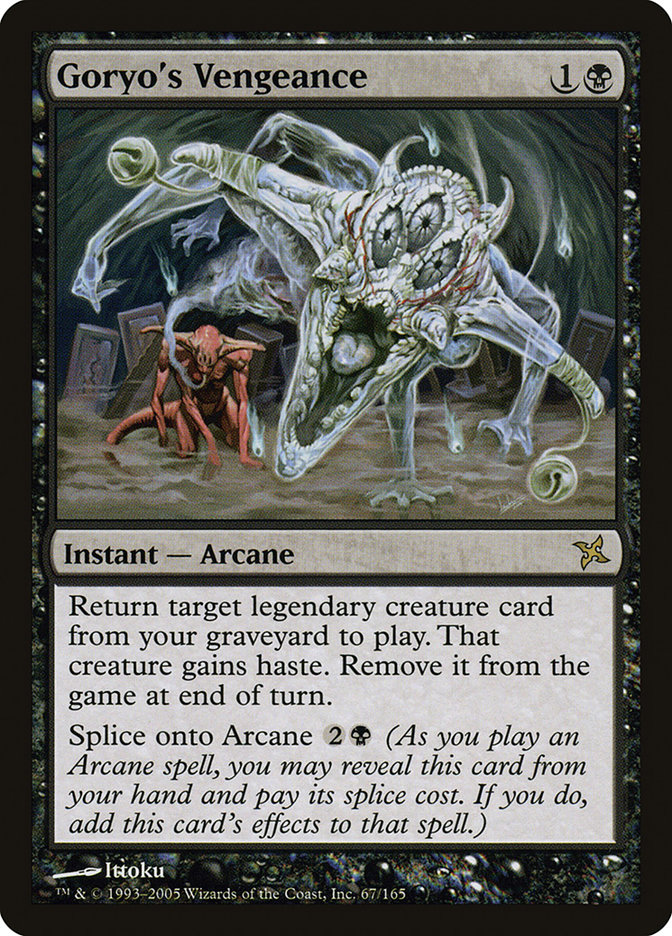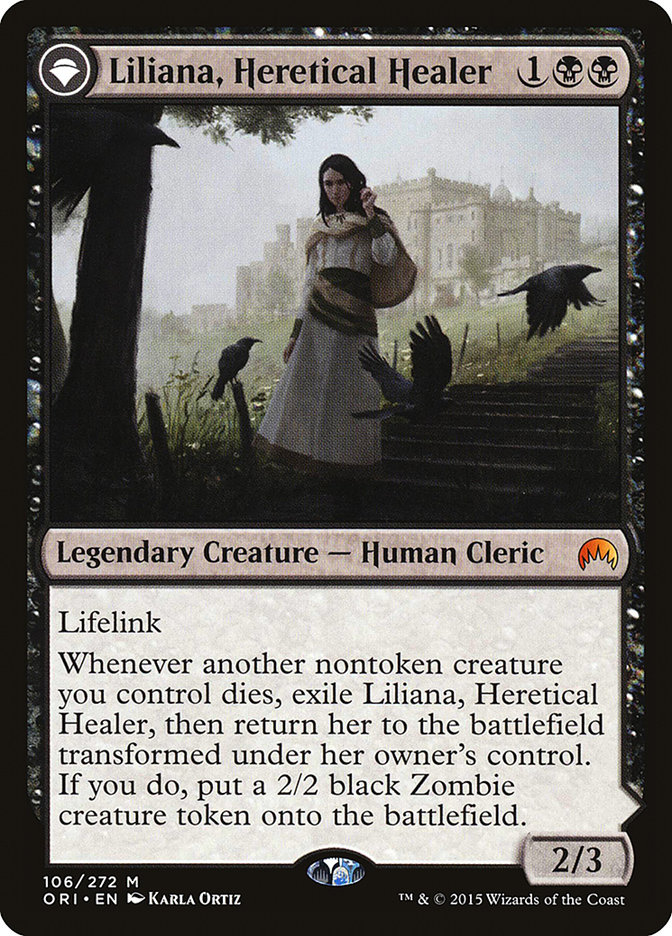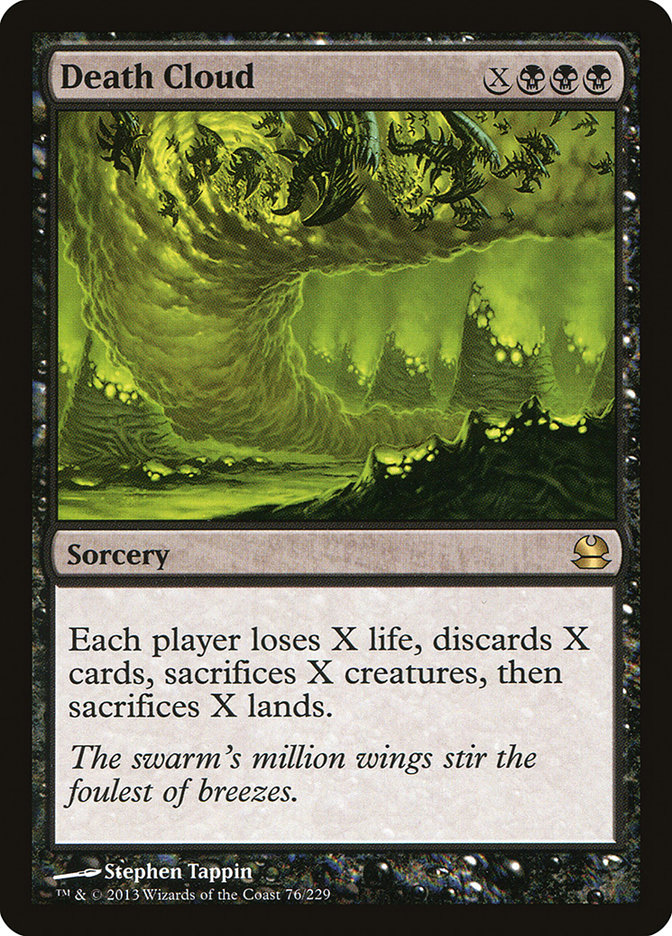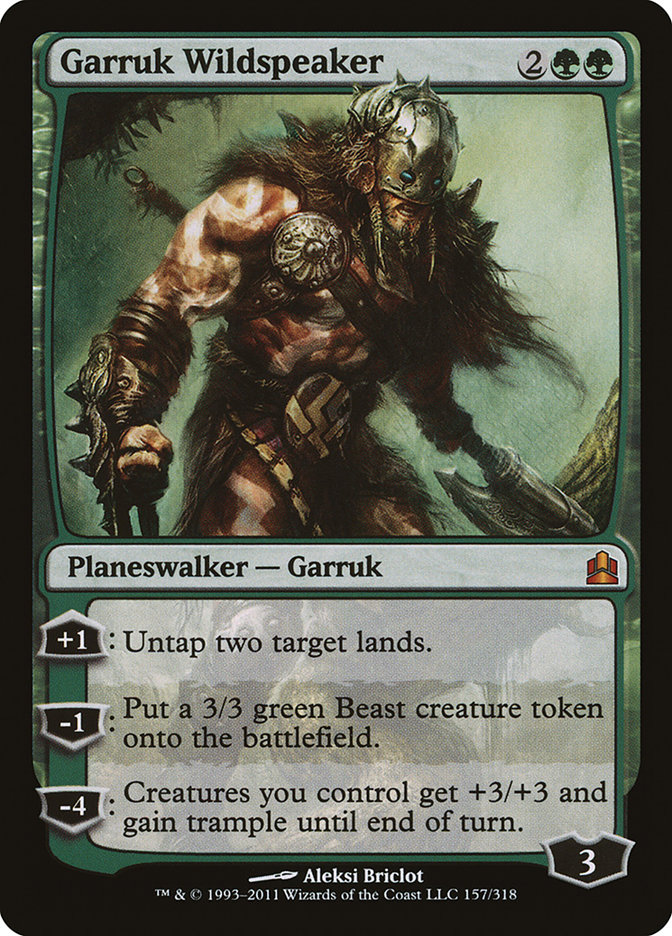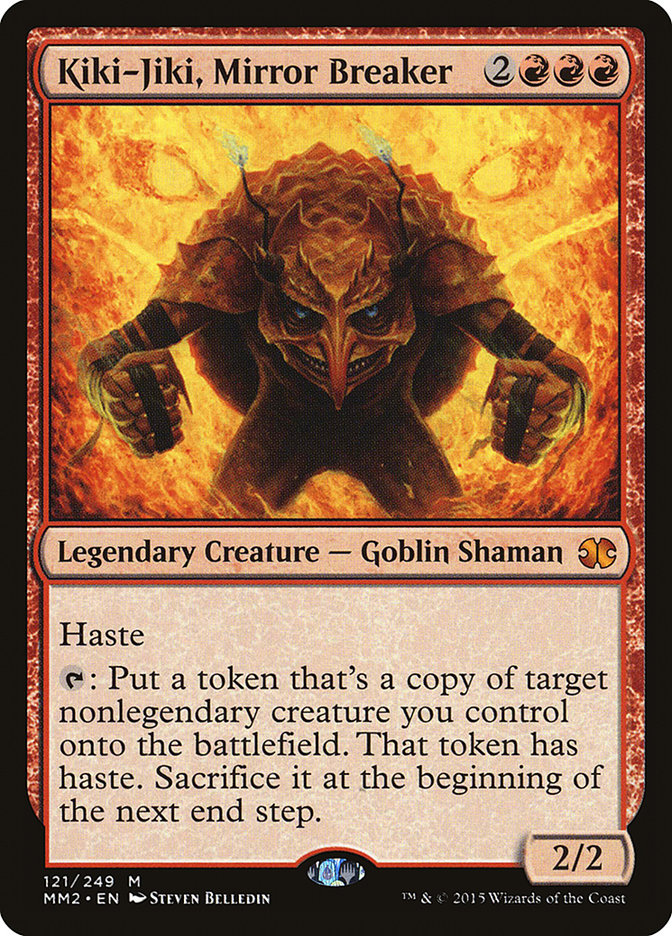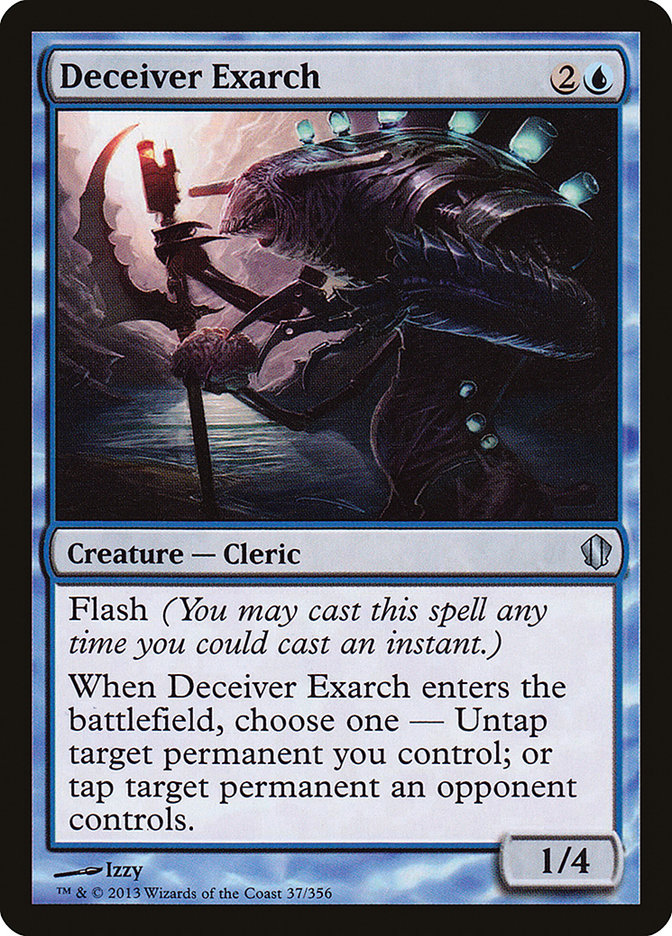While Battle for Zendikar is certainly on everyone’s mind with the Prerelease and Pro Tour fast approaching, I’ve been in a different place this
past week. From this point forward, I will be focused on scouring the spoilers, building new Standard decks, and cracking packs of BFZ to draft for the
first Pro Tour of the season, but before getting into that groove I want to share some of what I’ve been up to. This past weekend was Grand Prix Oklahoma
City, a Modern tournament. Although I only min-cashed the event, and at the last minute decided to abandon U/R Twin which catapulted BBD into a finals
appearance, I think the deck that Gerry and I played was awesome, but the things I tried to get to that point were even more exciting.
First of all, the deck:
Creatures (12)
- 1 Grim Lavamancer
- 3 Snapcaster Mage
- 2 Tasigur, the Golden Fang
- 4 Jace, Vryn's Prodigy
- 2 Pia and Kiran Nalaar
Lands (23)
Spells (25)
- 4 Lightning Bolt
- 1 Mana Leak
- 4 Serum Visions
- 1 Terminate
- 2 Remand
- 4 Inquisition of Kozilek
- 1 Twisted Image
- 1 Go for the Throat
- 1 Dismember
- 3 Thought Scour
- 1 Rise
- 2 Kolaghan's Command
Sideboard

Some of the choices may look a little random, but for the most part we simply made compromises on various analogous effects. I won’t spend too much time
talking about this today, as I suspect Gerry has more to write about, and to some extent I’ve spoken about this decktwice already, but I will say that a lot of our small last minute
choices were quite good, and I think if we’d built our deck just a little bit better (and I’d not played like garbage in a couple spots) we really would
have done some damage in this tournament. Oh and if you raised your eye brows at the inclusion of Mom and Pops Nalaar, so did most of my opponents before
it trounced them.
That card is certainly real and fulfills several of the roles my original incarnations of Jace decks needed: a way to quickly stabilize and win the game.
Once Grixis Jace is able to establish multiple pieces of board position, it is a relatively simple affair to snowball and basically ensure your opponent is
never able to establish a critical mass of resources ever again. There were multiple boardstates where a Telepath Unbound, a Grim Lavamancer, and then
finally a Pia and Kiran more or less ensured that my opponent was locked out. A lot of our minute decisions were based around an expectation of an influx
of aggressive strategies at this Grand Prix, and Pia and Kiran is the ultimate tool for beating up decks like Affinity, Infect, and Merfolk.
I’ve never been much of a fan of Modern, but over the last month, my experimentation with Jace, Vryn’s Prodigy has single-handedly turned that around, and
at this point, I’m fairly upset to realize that I won’t be personally touching the format for a fair amount of time. While Battle for Zendikar
Standard is on the horizon and is sure to be a rich experience, I’ll certainly miss playing with one interaction for a while:
The week leading up to the Grand Prix for me more or less involved a lot of Magic Online and trying to break this. For those that aren’t aware, if one is
to activate a hasty Jace and immediately flip him to the Telepath Unbound, he is suddenly immune to the exile drawback on Goryo’s Vengeance. This can
facilitate, for example, the discarding of another big baddie with Jace’s loot who can then immediately use his -3 ability to target the Goryo’s Vengeance
and do something real dirty. Those are a great deal of implications for adding a two-mana instant to your Jace deck. The options were numerous, and I
didn’t really know where to start, so I began pretty fair:
Creatures (17)
Planeswalkers (2)
Lands (23)
Spells (18)
- 3 Goryo's Vengeance
- 3 Death Cloud
- 2 Damnation
- 2 Thoughtseize
- 1 Maelstrom Pulse
- 4 Inquisition of Kozilek
- 3 Abrupt Decay
Sideboard

I wanted to be able to play another legend that I could cast, and Liliana’s similar flip function made it an appealing choice. After searching for easy
ways to immediately transform her, Sakura-Tribe Elder and Fulminator Mage were the best options. Despite Death Cloud being merely a fringe player in
Modern, it is definitely the best black deck that plays the Rampant Snake and from there the pieces can start to come together.
Let me tell you, this deck is capable of going off and basically putting its opponents in the hard lock. Even without casting a Death Cloud, the ability to
flip Heretical Healer off of Fulminator Mage and immediately reanimate the Mage puts a lot of pressure on an opponent’s resources. Now, when you can do
that twice more and sometimes beyond that with Goryo’s Vengeance and Jace is when things get incredibly silly.
Another appealing aspect of the deck is how many planeswalkers we get to play naturally. Normal Death Cloud decks leverage Garruk Wildspeaker as a means to
completely clean out their opponent and then kill them with Beasts. The card type naturally plays well with Cloud since it does not affect them, and being
able to play a variety of them is incredibly potent.
This deck is super cool and does some crazy things when it gets going, but unfortunately, at the end of the day it’s still not very fast and has
consistency issues associated with not playing cantrips or being aggressive. I moved on.
Another powerful synergy with Goryo’s Vengeance in a manner similar to the Magic Origins planeswalkers that are able to dodge exile is Obzedat,
Ghost Council. This deck ended up being rather poor, and it is especially difficult to justify playing a fair deck without Lightning Bolt, but it’s
certainly interesting enough to share:
Creatures (13)
- 2 Snapcaster Mage
- 3 Geist of Saint Traft
- 2 Obzedat, Ghost Council
- 2 Tasigur, the Golden Fang
- 4 Jace, Vryn's Prodigy
Planeswalkers (1)
Lands (22)
Spells (24)

The inclusion of Geist is a tad random, but the deck is actually decent at putting quick pressure on your opponent. When you couple this with the potential
for Goryo’s Vengeance to just be an honest Fireblast, you can end games pretty quickly. Similar to the poor positioning of Esper Mentor lately, this
collection of cards just isn’t winning any awards for efficiency, and you’re better off going way over the top with something like U/W Control or grinding
them honestly with Kolaghan’s Command.
Creatures (9)
Lands (25)
Spells (26)
- 1 Goryo's Vengeance
- 4 Lightning Bolt
- 4 Gifts Ungiven
- 3 Lightning Helix
- 4 Remand
- 2 Spell Snare
- 3 Path to Exile
- 1 Timely Reinforcements
- 1 Unburial Rites
- 2 Lingering Souls
- 1 Kolaghan's Command
Sideboard

My next iteration was a bit more ambitious. A Jeskai Control deck featuring the Gifts Ungiven/Unburial Rites combo hasn’t been a mainstay of the format for
some time, but it is still a powerful package that can be placed into decks. Jace, Vryn’s Prodigy has some great synergy with being able to put many
different types of effects into your graveyard as well. While capable of some undoubtedly powerful things, Jace is rather vulnerable to your opponent’s
removal in a setting like this, and the mana is undeniably bad and awkward. However, this deck is what dug the rabbit hole.
Being able to generate a ton of value with Jace and Vengeance was great and all, but I wanted to be able to actually combo-kill my opponents with Goryo’s
Vengeance, and then it suddenly became obvious.
If Goryo’s Vengeance could act as a much cheaper proxy for Splinter Twin, maybe we were in business.
Granted, I went through a ton of iterations and tweaks of these various decks, so I won’t be giving you the full scoop, but here are the two final
decklists that I arrived at:
Creatures (14)
Lands (22)
Spells (24)
- 3 Goryo's Vengeance
- 4 Lightning Bolt
- 4 Serum Visions
- 2 Remand
- 4 Inquisition of Kozilek
- 3 Thought Scour
- 2 Murderous Cut
- 2 Kolaghan's Command
Sideboard

This was my final version of “let’s play a grindy game and eventually kill them by surprise.” There’s a lot of appeal here. You’re still a perfectly
functional Snapcaster Mage/Jace, Vryn’s Prodigy/Kolaghan’s Command deck that is capable of playing a powerful lategame. On the other hand, you can just
randomly get people. This is the only deck from the Twin-family that can kill an opponent from absolutely nothing but four mana and a Kiki-Jiki in the
graveyard. Even in your main phase, all that needs to be done is to cast a Deceiver Exarch or Pestermite, untapping your land and casting Goryo’s
Vengeance. That is a pretty incredible difference from needing to cast a creature on your opponent’s end step and then play another four mana sorcery. That
being said, you still require a lot more moving pieces than Twin, and the “manual” kill of hardcasting Kiki-Jiki is significantly more difficult.
While you do actually have the benefit of being mostly insulated from Spellskite (Deceiver Exarch and Kiki-Jiki can specifically only target your
permanents), you’re also a bit more vulnerable to light disruption like Lightning Bolt.
One thing that I do love about this decklist are the sideboard Splinter Twins. Graveyard hate is immensely appealing against this strategy, and after
bringing in Twins, you can fight your opponent on a ton of different axes that put them in a tough squeeze as to how to respond.
Ultimately, as I played more, I increasingly came to the conclusion that I wanted the deck to continue to push into a more combo-oriented direction, as it
was the best way for me to extract value from incidentally drawn Goryo’s Vengeances and Kiki-Jikis at inopportune times.
That led to this final list, which I wish I had simply gotten to play with more but ran out of time. I chickened out because it felt good but not quite
right:
Creatures (15)
- 2 Kiki-Jiki, Mirror Breaker
- 1 Pestermite
- 2 Spellskite
- 4 Deceiver Exarch
- 4 Snapcaster Mage
- 2 Jace, Vryn's Prodigy
Lands (23)
Spells (22)

This looks far more similar to a blend of Sam Pardee and PV’s Twin strategies, and that was my intention. I like this deck’s ability to play out very
similarly to a normal U/R Twin deck with a lot of built in redundancy and, again, the ability to attack on a large number of angles. This will certainly be
the first thing I start looking to work on for the RPTQ in October.
While this is the conclusion of my adventures with Jace, Vryn’s Prodigy + Goryo’s Vengeance this past week, I did try some other stuff that may interest
any Modern enthusiasts.
Bonus Decklists!
Creatures (11)
Lands (23)
Spells (26)
- 4 Lightning Bolt
- 2 Mana Leak
- 4 Serum Visions
- 1 Pyrite Spellbomb
- 2 Engineered Explosives
- 1 Pithing Needle
- 3 Remand
- 2 Electrolyze
- 3 Spell Snare
- 1 Cryptic Command
- 1 Relic of Progenitus
- 2 Thopter Spy Network
Sideboard

Trinket Mage for Hangarback Walker is a powerful effect. I’ve talked in past articles about the necessity to get over our natural assumptions towards the
viability of cards in a specific format, and while it may be easy to look at Thopter Spy Network and assume it to be garbage, I assure you it is not.
Although Pia and Kiran Nalaar may simply be a better tool as a result of their speed, Spy Network is not particularly beatable for other fair decks in a
long contest.
Creatures (5)
Lands (24)
Spells (32)
- 4 Lightning Bolt
- 4 Time Warp
- 1 Sleight of Hand
- 4 Serum Visions
- 4 Remand
- 2 Spell Snare
- 2 Walk the Aeons
- 2 Cryptic Command
- 1 Elixir of Immortality
- 4 Temporal Mastery
- 4 Dictate of Kruphix
Sideboard

The Mono-Blue Time Walk deck is a seldom played fringe deck in Modern that typically uses Jace Beleren as its kill condition and draw engine to hope to
“go-infinite” with various Time Walk effects and Elixir of Immortality. This list attempts to use Vryn’s Prodigy as a means to make sure getting to that
“infinite process” is easier and more reliable by giving the deck more virtual copies of those cards. Splashing red for Lightning Bolt and sideboard cards
does two things: It gives us a much faster incidental kill condition by looping Bolts, and it also gives the deck some much needed interaction. You can
judge me all you want for the bizarre manabase, which I have no idea what to do with because I want to play my own Blood Moons, red spells, and try to
insulate myself against Choke.
Creatures (12)
Planeswalkers (4)
Lands (22)
Spells (22)
- 2 Talisman of Dominance
- 4 Inquisition of Kozilek
- 3 Mox Opal
- 2 Nihil Spellbomb
- 2 Torpor Orb
- 2 Dismember
- 4 Ensoul Artifact
- 3 Stubborn Denial
Sideboard

This is a bit of a spiritual update of Shouta Yasooka’s Tezzeret deck from a few years ago. Rather than being a control deck, we’re basically trying to
just kill our opponents with a bunch of disruption and 5/5s. The aggressive and Burn matchups weren’t actually too bad once I incorporated Vault Skirge
into the deck; between the chance of having a 5/5 lifelinker or multiple Spellskites, I gave the deck enough room to get Tezzeret online and close with his
ultimate.
I’ve definitely gotten Modern out of my system for a while, and it’s time to move on to new and much more expensive casting costs. Next week, Standard will
be the name of the game, but in the mean time, I hope you’ve enjoyed a glimpse into my deck folder on Magic Online and haven’t deemed me too large a
lunatic.

